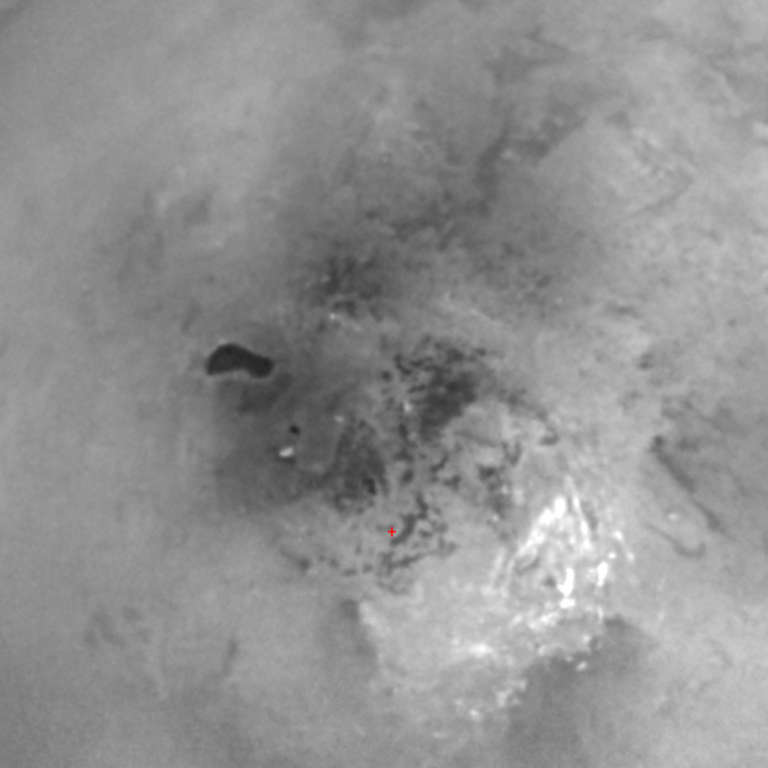All
All
Stories, updates, insights, and original analysis from The Planetary Society.
Cassini Poised to Pinpoint Huygens' Landing Site At Last
I've just posted a very brief update on the upcoming Titan flyby, which will be the first to include RADAR imaging across the Huygens landing site.
A way-cool Cassini picture: rings, Titan, Dione, Prometheus
I just noticed this picture on the Cassini raw images website. I love these
Some bad news for fans of Titan RADAR
According to Jason Perry, the much-anticipated Titan-7 RADAR imagery across Titan's southern hemisphere may have been lost due to an error on Cassini's solid state recorder. That will be very sad if it turns out to be true.
Cassini tour page revised
Cassini mission planner Dave Seal just gave me the latest reference trajectory for Cassini, so I've gone through and updated the flyby altitudes on the Cassini tour page.
A change of plans for Cassini: higher altitude for the "T7" Titan flyby
The June 15 Cassini Project Update includes a note about a difficult decision -- they are raising the altitude of an upcoming Titan flyby,
News: Dark Spot Near the South Pole: A Candidate Lake on Titan?
The Cassini imaging team has released an image containing a feature unlike any other that they have seen on Titan. The very dark color, curvaceous outline, and sharp edge of the feature have led them to the conclusion that it could well be the long-theorized but never-before-seen body of liquid hydrocarbons on the surface of Titan.
New Mosaics of Huygens' Titan Images
Although the two spacecraft traveled a billion kilometers together to study Titan, Cassini and Huygens are two very different types of missions.
Cassini's Radio Ear on Huygens
Scientists have released a new sound from Huygens, representing the radio signal that Cassini detected from the little probe as it descended to Titan's surface.
News: Radio Astronomers Rescue Science Results for Huygens' Doppler Wind Experiment
Earth's radio astronomers have saved the day for one of the Huygens instrument teams. Today, the Doppler Wind Experiment (DWE) team announced their first science results, despite losing nearly all of their expected data.
3-D Views of Titan's Surface from Huygens
It's been close to a month since Huygens descended to the surface of Titan. Many visitors to this website have expressed impatience with the pace of the release of images from the Huygens cameras, a feeling that is no doubt shared by space enthusiasts around the world who are eager to see refined views of the alien surface of Titan.
They Were the First, and the Last, to Hear from Huygens
On January 14, 2005, the eyes of the world were on the European Space Operations Centre in Darmstadt, Germany, where Huygens mission operators were anxiously awaiting news from Huygens. Would the little probe -- a mission built in seventeen countries, more than twenty years in the making -- be a success, or would it prove a repeat of the heartbreaking silence of Beagle 2?
Huygens' Descending View of Titan
Scientists from the Huygens Descent Imager Spectral Radiometer (DISR) team have released their first mosaic of images captured during Huygens' descent. The mosaic is composed of 30 images captured by the Medium Resolution Imager of Huygens' Descent Imager Spectral Radiometer while the probe was spinning and descending toward Titan.
Raw Images from Huygens
In the 48 hours since Huygens' data first began streaming back to Earth, a few processed images of the channeled landscape and bouldery landing site have been released to the public. Now, the Descent Imager Spectral Radiometer team at the University of Arizona has put all of Huygens' images online for the public to view.
Huygens blog: "It's impossible to resist the speculation."
After a mere twelve hours of work, all six of the science teams on Huygens were able to report results this morning. You could easily tell the difference between the administrators and the scientists on this morning's press panel: the administrators looked bright, fresh, and well-rested, while the scientists looked decidedly weary.
New Images from the Huygens Probe: Shorelines and Channels, But an Apparently Dry Surface
This image brought applause from everyone at the European Space Operations Centre, Darmstadt, Germany.
Huygens landing day live blog
A frequently updated blog with the tumultuous events of Huygens' landing on Titan.
Huygens blog: "This is probably not the best day to speculate."
Anticipation here at the European Space Operations Centre (ESOC) is rising to a fever pitch. The full complement of more than a hundred scientists are here from all over Europe and the U.S.; they are running around, greeting each other, getting ready for the long-awaited data.
Huygens blog: It's going to be great!
In two days, it'll all be over; for better or worse, Huygens will have hit the ground on Titan, and back on Earth we'll be waiting to see whether the data will be returned. Today, I arrived at ESA's European Space Operations Centre (ESOC) in Darmstadt, Germany.
Titan: Arizona in an Icebox?
A week after Huygens' descent, the emerging picture of the surface of that smoggy world is of an arid, icy desert, where periodic storms of methane rain create transient rivers that wash sooty soil from icy highlands out to short-lived pools and lakes. The pools dry up -- perhaps sinking into a sandy soil of glass-like water ice -- and the Titanian desert waits for another methane storm.


 Explore Worlds
Explore Worlds Find Life
Find Life Defend Earth
Defend Earth


 Sun
Sun Mercury
Mercury Venus
Venus Earth
Earth Mars
Mars Jupiter
Jupiter Saturn
Saturn Uranus
Uranus Neptune
Neptune Small Bodies
Small Bodies







